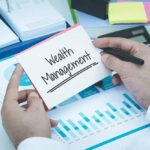
It is challenging to foresee a list of technology trends for 2023 due to the amazing rate of technology innovation. Particularly now when revolutionary discoveries are being made every day.
With the aim of giving us a glimpse into how the evolution of technology will shape our lives in the future, this guide offers a comprehensive outlook on all the maturing trends in technology that will come to fruition in 2023.
Top 10 New Technology Trends for 2023
Here is the list of the Top 10 New Technology Trends for 2023.
1. Artificial Intelligence
Artificial intelligence has long been the subject of hype. If you are a tech professional, you might not enjoy how pervasive artificial intelligence has become. For both creative and routine activities, AI has already proven its brilliance in navigation apps, cell phones, and more.
The hype surrounding AI won’t go away anytime soon. It will become more available because of the expanding ecosystem of as-a-service platforms and low-code or no-code AI systems.
Synthetic content is a promising area of AI to keep an eye on. It involves using the AI’s imagination to produce brand-new, unheard-of sights, sounds, or data. We can anticipate seeing the development of AI that is useful in both business and entertainment in 2023.
Top online companies like Facebook, Google, and others are prioritizing AI in all areas. This suggests that this technology will rule the future, and there will be a pressing demand for talented experts in this area.
The field of artificial intelligence has a wide variety of jobs. Some of the most popular job titles are:
- AI Engineer,
- AI Research Scientist,
- Machine Learning Engineer,
- AI Architect.
2. ChatGPT-Style Curated Interactions
ChatGPT is one of the most exciting new trends in the tech sector. With its own flawless GPT3 technology—the auto-regressive language model that offers AI “human-like capabilities” to interpret and compose texts—it has stirred up a storm in the world of automated chatbots. Deep learning also allows ChatGPT to solve mathematical equations, produce graphics from text prompts, and provide a variety of writing assignments, from coming up with funny video titles to composing poetry.
According to OpenAI, who developed it, the ChatGPT algorithm is trained to respond to follow-up queries, comprehend errors based on user feedback, and refute false suppositions.
3. Marketing in the Metaverse
According to a 2021 Bloomberg research, the metaverse business is expected to grow to a remarkable $800 billion by the year 2024. A 3D virtual simulation called the metaverse allows users to communicate with one another across many devices. Advertisers will grasp the limitless marketing opportunities of this immersive experience under the reign of Internet 3.0, making it the hub of brand recognition and engagement.
With different Artificial Intelligence (AI) and Virtual Reality (VR) enabled experiences, brands like Nikeland are already tracking consumer preferences and shopping habits in their metaverse storefronts. Others are also looking to improve user experience by using QR codes to link their real stores to the metaverse.
4. The Rise of Quantum and Edge Computing
According to a 2022 ReportLinker article, the edge computing market would have a rapid 21.6% increase between 2021 and 2028. In a contrast to a centralized server environment, edge computing is a programming technique that gathers, saves, and processes data at the data source.
Read: Explain What is Quantum Computing in Simple Terms
This decentralized method allows the machine to evaluate raw data in real time and offers insights that are closer to the real point of interaction. From wearables to computers that monitor intersectional traffic flow, edge computing is utilized everywhere. Yet, it may see a radical deployment across the data analytics sector in 2023’s tech trends.
5. Digital Twins to Bridge the Gap Between the Digital and Physical Worlds
A number of technological trends for 2023 have been generated by hyper-automation, one of which is the use of digital twins, or virtual replicas of actual phenomena. Data scientists now want to be able to visually witness changes in actual events and processes by providing machines with a lot of data due to the prevalence of various data points.
To improve logistics and manufacturing, cloud providers have already introduced sizable digital twin infrastructures like Google’s Digital Supply Chain and Microsoft’s Digital Twin On-Ramp. A report from Grand View Research published in 2022 predicts a staggering 37.5% compound annual growth rate between 2023 and 2030, demonstrating the growing importance of digital twins in the day-to-day operations of various sectors.
6. Datafication
The breakthroughs described in the list of technological trends for 2023 will inevitably lead to the datafication of industries. The act of converting or transitioning human tasks into data-driven technology is referred to as the process. It represents the first important development toward a fully data-driven society. Other branches of the same customer-centric analytical culture include the idea behind this project, product behavior analytics, transportation analytics, health analytics, etc.
Due to the vast number of linked Internet of Things (IoT) devices, it is possible to analyze a company’s strengths, weaknesses, risks, and opportunities using a greater number of data points. According to Fittech, when the market for datafying sectors surpasses $11 billion in 2022, it is evolving into a profitable business model.
7. AI use using low- or no-code
No-code AI will emerge in 2023 when artificial intelligence (AI) gives up its technical language and adopts simple drag-and-drop interfaces. Nowadays, anyone may use a computer without having to grasp the operating system’s background code. Similarly to this, AI operations and solutions will improve without requiring programmers to write a single line of code.
The general public’s growing acceptance of it will only enable more companies to fully tap into the potential of AI-based intelligence and produce better products. With its user-friendly interfaces across a variety of industries like retail and website creation, no-code AI has already made its way into the market.
8. Wireless-Value Realization
Along with improving connection, next-generation wireless will support process optimization for greater dependability, reduced costs, fewer risks, and greater productivity. If numerous wireless technologies are merged into a single infrastructure and used, the transition to the digital revolution will be more seamless.
Future wireless will require less financing if its technical underpinning is more open, unified, secure, dependable, and scalable. The Internet of Things (IoT) trend will find it simpler to gather environmental data thanks to the new wireless technology. Applications in radar sensing, satellite technology, energy harvesting, and other fields are likely.
9. Blockchain
Blockchain technology is in demand at present. This technology has become more and more popular, and many significant businesses are headed in that direction. As a result, there is a huge need for developers in the field of blockchain technology.
The network’s decentralization, security, and data privacy are among blockchain’s advantages. Applications for blockchain technology go well beyond digital currency like bitcoin. Blockchain’s worth will significantly rise, reaching $176 billion by 2025 and $3.1 trillion by 2030, predicts Gartner.
Whether they are small businesses or established corporations, everyone wants a piece of the blockchain industry. Several of the top employers of blockchain developers include Infosys, Capgemini, TCS, Accenture, and others.
10. Industry Cloud Platforms
Businesses can increase the flexibility of their workload management by using industrial cloud platforms. They can accelerate improvements to data analysis, corporate operations, and compliance processes. To enhance adaptability, quicken time to value, and meet the demands of vertical industry sectors, they combine platforms, software, and infrastructure as a service.
40% of responses, according to Gartner, have already begun adopting industrial cloud platforms. This will have accelerated more than 50% of companies’ important business initiatives by 2027. Business-specific capabilities and integrated data fabrics are used by industry cloud platforms to quickly adjust applications to market disturbances.
Conclusion
Inevitably, technology will keep developing more quickly. Mastering new technologies, learning how to cope with continual change, and using them as a competitive advantage are necessary skills for success in a tech job. I hope you liked the post Top 10 New Technology Trends for 2023 please do share with others.








